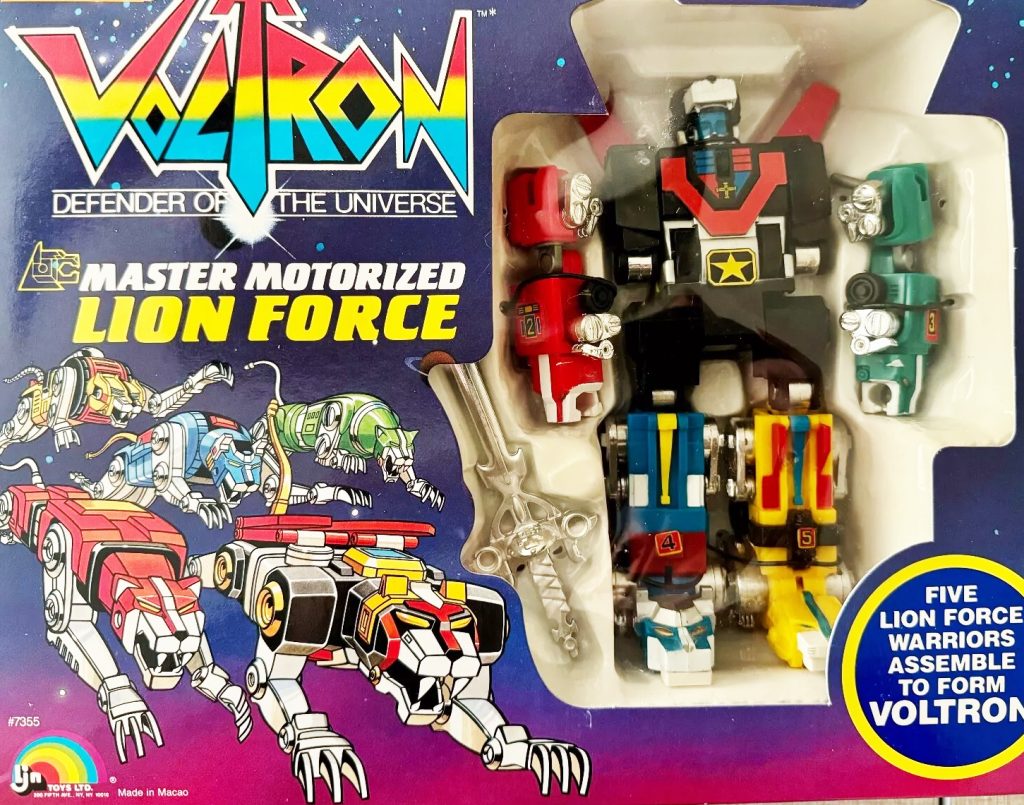In the mid-80s, one franchise towered over the rest—five robotic lions, five heroic pilots, and one blazing sword. Voltron: Defender of the Universe blended Japanese anime roots with U.S. syndication savvy, becoming a global hit whose toy line captured the thrill of combining into something greater.
The Birth of Voltron
Adapted from Japan’s Beast King GoLion, Voltron hit U.S. TV in 1984. The premise: pilots Keith, Lance, Pidge, Hunk, and Princess Allura defend planet Arus from King Zarkon and monstrous Robeasts—uniting their robotic lions to form Voltron. Space opera, monster-of-the-week battles, and a colorful team dynamic made it instant appointment viewing.
The Toy Line: Combine and Form Voltron
Produced in the U.S. by Matchbox, the flagship set centered on the Lion Force Voltron: five lions that click together into a roughly 16-inch robot, complete with the iconic blazing sword. Lions featured meaningful articulation and show-accurate sculpting, while the combine sequence felt rewarding—engineering you could perform on your coffee table.
Die-Cast Weight, Premium Feel
What set early releases apart was the use of die-cast metal. The heft didn’t just add durability—it broadcast “premium” from the moment you lifted a lion. Later all-plastic runs exist, but for many collectors, the die-cast originals remain the gold standard.
Beyond the Lions: Pilots, Villains, and Robeasts
The line expanded with pilot figures—gear, helmets, and color cues—plus antagonists like King Zarkon and Prince Lotor. Select Robeasts joined the fray, giving kids proper foils for shelf-top showdowns.
Variations: Vehicle Voltron
Success spawned a second format: Vehicle Voltron, a massive combiner built from 15 vehicles across land, sea, and air teams. It never eclipsed the lions’ popularity, but it delivered a different puzzle for kids who loved intricate merges and squad-based collecting.
Roleplay & Playsets
Play moved off the shelf with the Castle of Lions playset—compartments, consoles, and lookout points—and roleplay gear like a toy blazing sword and shield. The result was a complete loop: build Voltron, stage the base, and act out the finale.
Enduring Legacy & Revivals
Like many 80s titans, Voltron cycled through dormancy and revival. The most notable resurgence came with Voltron: Legendary Defender (2016), a modern animated reboot that refreshed designs and character arcs and re-centered toys on the combining lions—proof that the core idea still roars.
Collectors’ Market
Original 1980s sets—especially complete die-cast lions with accessories—command strong prices. Reissues and premium modern releases scratch the itch for display without vintage fragility. As always, verify parts (sword, small connectors), paint wear, and authenticity.
Why It Still Works
- Team fantasy: five pilots, five roles—identity and cooperation baked in.
- Mechanical payoff: the combine is a ritual; the finished silhouette is iconic.
- Display presence: big robot, bold colors, instant centerpiece.
If you love team mechanics and combiners, you’ll also vibe with Power Rangers and the engineering roots explored in Transformers G1. For another 80s animation mainstay, see ThunderCats and covert-ops vehicle magic in M.A.S.K..
